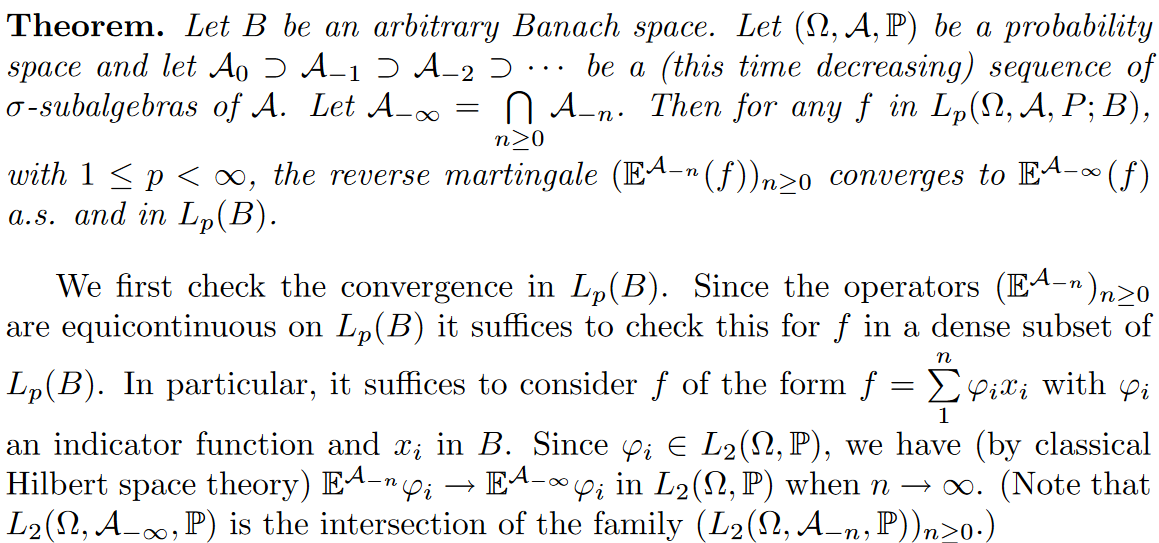In section 1.5 of a course given by Gilles Pisier, the author is claiming that in the excerpt below $\operatorname E[\varphi_i\mid\mathcal A_{-n}]\to\operatorname E[\varphi_i\mid\mathcal A_{-\infty}]$ in $L^2(\operatorname P)$ would follow from classical Hilbert space theory. What does he mean? How does he obtain this convergence?
Clearly, we know that if $\mathcal F\subseteq\mathcal A$ is a $\sigma$-algebra on $\Omega$, then $$\pi_{\mathcal F}X:=\operatorname E\left[X\mid\mathcal F\right]\;\;\;\text{for }X\in\mathcal L^1(\operatorname P)$$ is a linear contraction from $\mathcal L^p(\operatorname P)$ to $$\mathcal L^p(\mathcal F,\operatorname P):=\{X\in\mathcal L^p(\operatorname P):X\text{ is }\mathcal F\text{-measurable}\}.$$ If $p=2$, then $\pi_{\mathcal F}$ is an orthogonal projection from $\mathcal L^2(\operatorname P)$ to $\mathcal L^2(\mathcal F,\operatorname P)$ and hence a self-adjoint operator on $\mathcal L^2(\operatorname P)$. By the tower property of conditional expectation, we obtain $$\pi_{\mathcal G}=\pi_{\mathcal F}\pi_{\mathcal G}=\pi_{\mathcal G}\pi_{\mathcal F}\tag2$$ for all $\sigma$-algebras $\mathcal F,\mathcal G\subseteq\mathcal A$ with $\mathcal G\subseteq\mathcal F$.
While all that is clear to me, I don't get which argument he is referring to.

